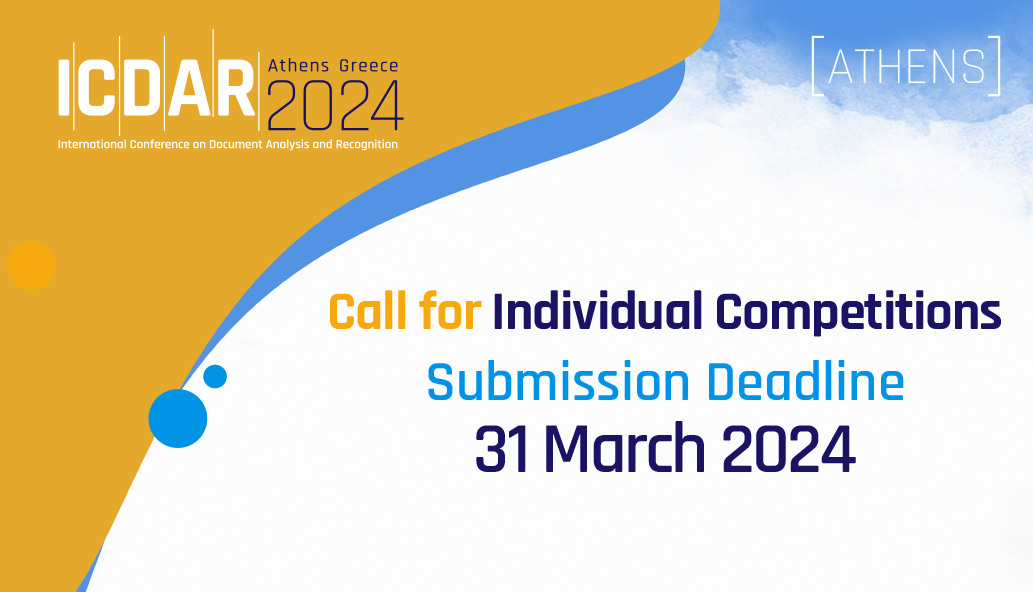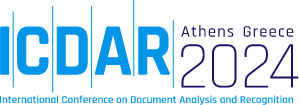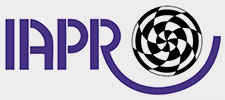Competitions
The ICDAR 2024 Organizing Committee is supporting a set of competitions that address current research challenges related to areas of document analysis and recognition.

ICDAR 2024 Competition on Recognition and VQA on Handwritten Documents
Abstract:
This competition (ICDAR 2024-HWD) aims towards a deeper understanding of handwritten multilingual documents. Documents are in English or Indian Languages. This edition proposes three main tasks: Isolated Word Recognition (Task A), Page Level Recognition and Reading (Task B), and Visual Question Answers on Handwritten Documents.
ICDAR 2024 Competition on Reading Documents Through Aria Glasses
Abstract:
From a mixed reality perspective, understanding the text in the world is of paramount importance. However, all day long, always on, machine perception devices like Aria Glasses pose unique primary challenge of lower resolution due to their power and sensor constraints. Moreover, diverse everyday scenes like variations in the lighting condition and reading positions further complicate the reading tasks. To address this, we propose a new dataset and a challenge. Specifically, we propose three novel tasks: Isolated Word Recognition in Low Resolution (Task A), Prediction of Reading Order (Task B), and Page Level Recognition (Task C). We provide new training and test sets consisting of document images captured by Aria Glasses while reading diverse documents in English under various everyday scenarios.
ICDAR 2024 Competition on Multi Font Group Recognition and OCR
Abstract:
This competition investigates the performance of Optical Character Recognition (OCR) systems for early-modern prints, with a main focus on font group diversity. Participants have to submit both OCR results, and font group recognition at character level.
This won’t be realised – ICDAR 2024 Occluded RoadText Competition
Abstract:
The Occluded RoadText challenge is designed to evaluate and advance existing methodologies in scene text detection and recognition, specifically under conditions of partial occlusion. The challenge introduces a new dataset featuring real-world traffic scenes with natural objects obscuring parts of the text. Participants will need to develop methods that can decipher partially visible text and leverage the context of the entire image, including other visible texts and objects.
ICDAR 2024 Competition on Artistic Text Recognition
Abstract:
Artistic text is widely used in advertisements, slogans, exhibitions, decorations, magazines, and books. However, artistic text recognition is an overlooked and extremely challenging task with importance and practicability in various applications. Artistic text recognition often has several challenges such as the various appearances with special-designed fonts and effects, the complex connections and overlaps between characters, and the severe interference from background patterns. Therefore, we organize this competition to invite participants to solve these challenges. We hope that the dataset and task could greatly promote the research in text recognition.
ICDAR2024 Competition on Recognition of Chemical Structures – CROCS 2024
Abstract:
The purpose of this competition is to attract the attention of researchers in the field of Optical Character Recognition (OCR) to the challenge of recognizing handwritten chemical structures. This challenge is distinct from the traditional recognition of handwritten text and mathematical formulas, as the data format of chemical structures is more complex. Solving this problem would not only be an academic breakthrough but also have practical applications, particularly in the education of middle and high school organic chemistry. We have established a new benchmark for this issue and released a self-built dataset for handwritten chemical structure recognition, named EDU-CHEMC. We collected 60,974 images containing chemical structures from real educational settings in middle and high schools. The provided annotations include original Chemfig strings and structured strings after regularization, facilitating researchers in establishing baselines. The sole task of this competition is to accurately extract the information of the structural formulas in the images, including atoms, chemical bonds, and their connections. We hope that by hosting this competition, we can promote the development of the subfield of handwritten chemical image structure recognition.
ICDAR 2024 Competition on Handwritten Text Recognition in Brazilian Essays – BRESSAY
Abstract:
The ICDAR 2024 Handwritten Essay Recognition competition aims to transform the evaluation of academic essays through Handwritten Text Recognition (HTR) technology. This competition specifically addresses the analysis and transcription of manuscript essays in Brazilian Portuguese, which corresponds to a critical step in academic assessment in many countries. Participants will face the challenge of exploring and transcribing various nuances of handwriting, including erasures, overwritten text, and differences in style with a dataset rich in variability. The competition is divided into three challenges based on the complexity of the recognition level: line, paragraph, and page. Each level presents unique challenges in accurately transcribing handwritten texts, contributing to the advancement of HTR technologies in the field of educational technology and specifically in the Brazilian Portuguese language.
ICDAR 2024 Competition on Few and Many Shot Layout Segmentation of Ancient Manuscripts
Abstract: Layout Segmentation is a critical aspect of Document Image Analysis, particularly when it comes to ancient manuscripts. It serves as a foundational step in streamlining subsequent tasks such as optical character recognition and automated transcription. However, one key challenge in this context is represented by the lack of available ground truths as they are extremely time-consuming to produce. Nevertheless, numerous approaches addressing this challenge heavily lean towards a fully supervised learning paradigm, which is difficult to use in real-world scenarios. For this reason, with this competition, we propose the challenge of addressing this task with a few-shot learning approach, involving the use of only three images for training. The competition dataset comprises four distinct ancient manuscripts, presenting heterogeneous layout structures, levels of degradation, and languages used. This diversity adds intrigue and complexity to the challenge. In addition, we have also created the opportunity to participate in the competition with the traditional many-shot learning approach, involving the use of multiple images for training. A single winner will be elected for each of the proposed tracks based on the system performance on a selected metric and will receive a cash prize.
ICDAR 2024 Competition on Historical Map Text Detection, Recognition, and Linking
Abstract:
Text on digitized historical maps contains valuable information providing georeferenced political and cultural context, yet the wealth of information in digitized historical maps remains largely inaccessible due to their unsearchable raster format. This competition aims to address the unique challenges of detecting and recognizing textual information (e.g., place names) and linking words to form location phrases.
ICDAR 2024 Competition on Handwriting Recognition of Historical Ciphers (HR-Ciphers)
Abstract:
Handwritten Text Recognition (HTR) in low resource scenarios (i.e. when the amount of labeled data is scarce) is a challenging problem. This is particularly the case of historical encrypted manuscripts, so called ciphers, which contain secret messages, and were typically used in military or diplomatic correspondence, records of secret societies, or private letters. In order to hide their contents, the sender and receiver created their own secret method of writing. The cipher alphabets oftentimes include digits, Latin or Greek letters, Zodiac and alchemical signs combined with various diacritics, as well as invented ones. The first step in the decryption process is the transcription of these manuscripts which is not easy due to the great variation of hand-writing styles, and cipher alphabets with a few number of pages. Although different strategies can be considered to deal with the insufficient amount of training data (e.g. few-shot learning, self-supervised learning) the performance of available HTR models is not yet satisfactory. Thus, we believe that a competition with a large number of symbol sets and scribes can boost the research of HTR in low resource scenarios.
For any questions, please contact the Competitions Chairs: competitions-chairs@icdar2024.net





